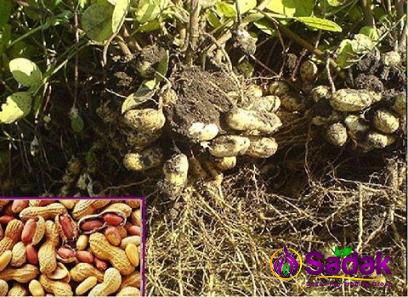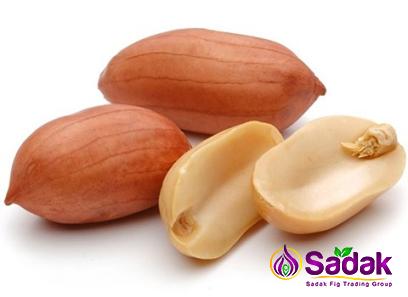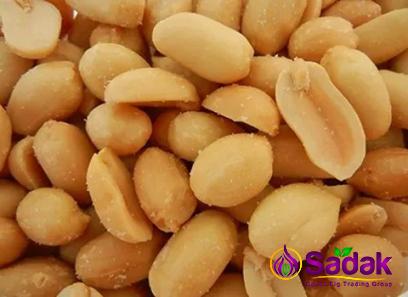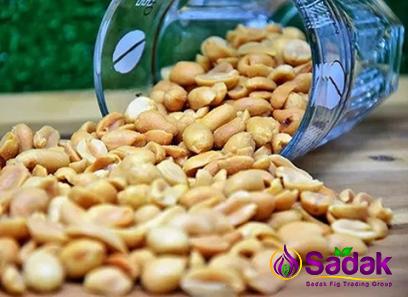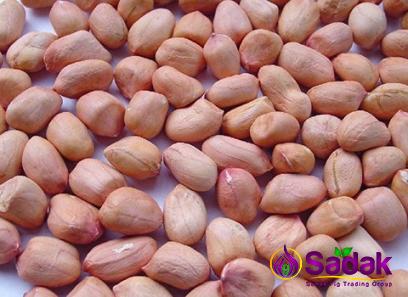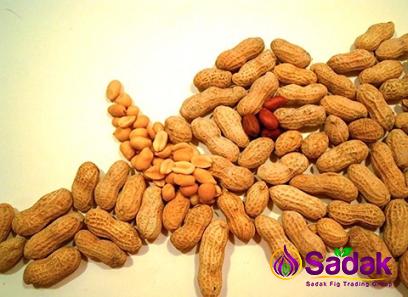Almonds, scientifically known as Prunus dulcis, are the seeds of the almond tree, which is native to the Middle East and South Asia. Revered for their numerous health benefits, almonds have been cultivated for thousands of years and are now enjoyed worldwide as a nutritious snack and a versatile ingredient in various cuisines.
Characteristics and Varieties:
Almonds are small, oval-shaped nuts encased in a hard, outer shell. Inside the shell, a thin brown skin covers the creamy white edible kernel. While traditionally referred to as nuts, almonds are actually seeds from the fruit of the almond tree. The tree itself is a deciduous tree that can grow up to 30 feet tall and produces fragrant, pink and white flowers in early spring before the leaves appear.
There are two main varieties of almonds:
1. Sweet Almonds: Sweet almonds are the most commonly consumed type of almonds. They have a delicate, slightly sweet flavor and are typically eaten raw or used in cooking and baking.
2. Bitter Almonds: Bitter almonds, on the other hand, have a distinct, bitter taste due to the presence of amygdalin, a compound that breaks down into cyanide when ingested. These almonds are primarily used for their oil and are not typically consumed in their raw state.
Nutritional Value and Health Benefits:
Almonds are known for their impressive nutritional profile, packed with essential nutrients that promote overall health. Some key benefits of almonds include:
1. High in Healthy Fats: Almonds are a rich source of monounsaturated fats, which can help lower bad cholesterol levels and reduce the risk of heart disease.
2. Rich in Antioxidants: Almonds are packed with antioxidants, including vitamin E, which helps protect the body against oxidative stress and may reduce the risk of chronic diseases.
3. Good Source of Protein: Almonds are an excellent source of plant-based protein, making them a great addition to vegetarian and vegan diets.
4. High in Fiber: Almonds are high in dietary fiber, which aids digestion, helps maintain bowel regularity, and promotes a feeling of fullness.

5. Promote Weight Management: Due to their high fiber and protein content, almonds can help control appetite and contribute to healthy weight management.
Culinary Uses:
Almonds are incredibly versatile and can be incorporated into a wide range of culinary creations. Some popular uses of almonds include:
1. Snacking: Almonds are often enjoyed as a quick, healthy snack on their own or in trail mixes.
2. Baking: Almonds are commonly used in baking and pastry making, adding a rich nutty flavor and texture to a variety of sweet treats such as cookies, cakes, and pies.
3. Cooking: Ground or slivered almonds are frequently used in savory dishes, providing a subtle crunch and flavor to salads, stir-fries, and pilafs.
4. Almond Milk: Almond milk, a plant-based alternative to dairy milk, has gained popularity among those following a vegan or lactose-free diet. It can be used in cooking, baking, or enjoyed as a refreshing beverage.
5. Almond Butter: Almond butter is similar to peanut butter but made from ground almonds. It is a nutritious and delicious spread that can be enjoyed on toast, in smoothies, or as a dip for fruits and vegetables.
Almond Industry and Production:
The global almond industry has experienced significant growth in recent years due to increased consumer demand for healthy foods. The United States, primarily California, is the leading producer of almonds, accounting for approximately 80% of the world’s almond supply.
Almond trees require specific climate conditions to thrive, including long, hot summers and mild, wet winters. The trees bloom in late winter or early spring, and the almonds are typically harvested in late summer or early fall. Mechanical shakers are used to remove the almonds from the trees, which are then dried, hulled, and processed before being sold as raw, roasted, or blanched almonds.
Sustainability and Environmental Impact:

While almonds have numerous health benefits, their production has raised concerns about sustainability and water usage. Almond trees are water-intensive crops, requiring significant irrigation during the growing season. In regions experiencing water scarcity, such as California, almond farming has led to conflicts between agricultural demands and conservation efforts.
To address these concerns, the almond industry has made efforts to improve water management practices, increase efficiency, and promote sustainable farming techniques. These initiatives aim to reduce the environmental impact of almond production and ensure the long-term sustainability of the industry.
In Conclusion:
Almonds are a fascinating fruit that offers a wide range of health benefits and culinary possibilities. From their nutritional value to their various uses, the versatility and popularity of almonds continue to grow. While sustainability challenges exist, ongoing efforts within the industry seek to address these concerns and ensure the responsible production of this beloved fruit. So, the next time you reach for a handful of almonds or incorporate them into your favorite recipe, appreciate the centuries-old legacy and nutritional richness of this remarkable fruit.I. Introduction to the Almond Industry:
The almond industry plays a significant role in the global agricultural sector and has seen substantial growth in recent years. Almonds are highly sought after for their nutritional benefits and culinary versatility. In this section, we will delve deeper into the business aspects of the almond industry, including market trends, production, and economic impact.
II. Market Trends and Demand:
The demand for almonds has been steadily increasing due to the growing awareness of their health benefits and rising consumer preference for nutritious and plant-based food options. Almonds are increasingly being recognized as a healthy snack and an ingredient in various food products, such as cereals, energy bars, and dairy alternatives. The market for almond-based products, including almond milk and almond flour, has particularly experienced substantial growth.
III. Global Production and Major Players:
The United States, particularly California, dominates global almond production, accounting for the majority of the world’s almond supply. California’s climate, with its long hot summers and mild winters, provides the ideal conditions for almond cultivation. Other major almond-producing countries include Spain, Australia, Iran, and Italy.
IV. Challenges and Risks in Almond Production:
The almond industry faces several challenges and risks that can impact production and profitability. One significant challenge is climate change, which can lead to extreme weather events, such as droughts, heatwaves, and storms, affecting almond tree health and yield. Additionally, pests and diseases, such as almond hull rot, can cause significant damage to almond crops.
V. Supply Chain and Distribution:

Almonds go through a complex supply chain before reaching consumers. After harvesting, the almonds are typically processed, shelled, sorted, and packaged. The processed almonds are then distributed to various channels, including wholesalers, supermarkets, specialty stores, and export markets. Efficient logistics and distribution networks are crucial to ensure that almonds reach their intended destinations in a timely manner.
VI. Supporting Industries: Processing and Packaging:
The almond industry relies on a range of supporting industries for processing and packaging. Companies specializing in almond shelling, blanching, roasting, and flavoring play an integral role in adding value to raw almonds and meeting consumer preferences. Additionally, packaging companies provide innovations in almond packaging, including portion-controlled packs and sustainable packaging solutions.
VII. Almond Trade and International Markets:
Almond trade is a significant aspect of the industry, with the global market for almonds expanding rapidly. The United States is not only a major almond producer but also a leading exporter. Almonds are exported to countries around the world, with key importers including China, India, Spain, Germany, and Japan. Developing markets in Asia, such as China and India, present tremendous growth opportunities due to the increasing middle-class population and changing dietary preferences.
VIII. Almonds and Sustainability:
Sustainable practices are essential for the long-term viability of the almond industry. This includes water conservation, responsible land management, and reducing the use of chemical inputs. Many almond growers have implemented sustainable farming practices, such as precision irrigation techniques and soil conservation measures, to minimize environmental impact and promote biodiversity.
IX. Research and Development in the Almond Industry:
Continuous research and development efforts are conducted in the almond industry to enhance crop yield, improve processing techniques, and develop new almond-based products. Collaborations between almond growers, research institutions, and industry associations focus on creating innovative solutions, such as disease-resistant varieties, efficient irrigation systems, and alternative uses of almond by-products.
X. Almonds as an Investment Opportunity:
Given the strong market demand and future growth potential, investing in the almond industry can be an attractive option for individuals and businesses. Almond orchards can yield long-term benefits, as almond trees have a lifespan of 25-30 years. However, it is important for investors to thoroughly understand the agricultural practices, market conditions, and potential risks associated with almond farming before making investment decisions.
XI. Conclusion:

The almond industry is not only a vital component of the global agricultural sector but also a thriving business sector with significant economic and health benefits. As consumer demand for healthy and sustainable food choices continues to rise, almonds have emerged as a valuable commodity. With proper management, sustainable practices, and ongoing research and development, the almond industry is poised to flourish and provide opportunities for businesses, investors, and consumers alike.


